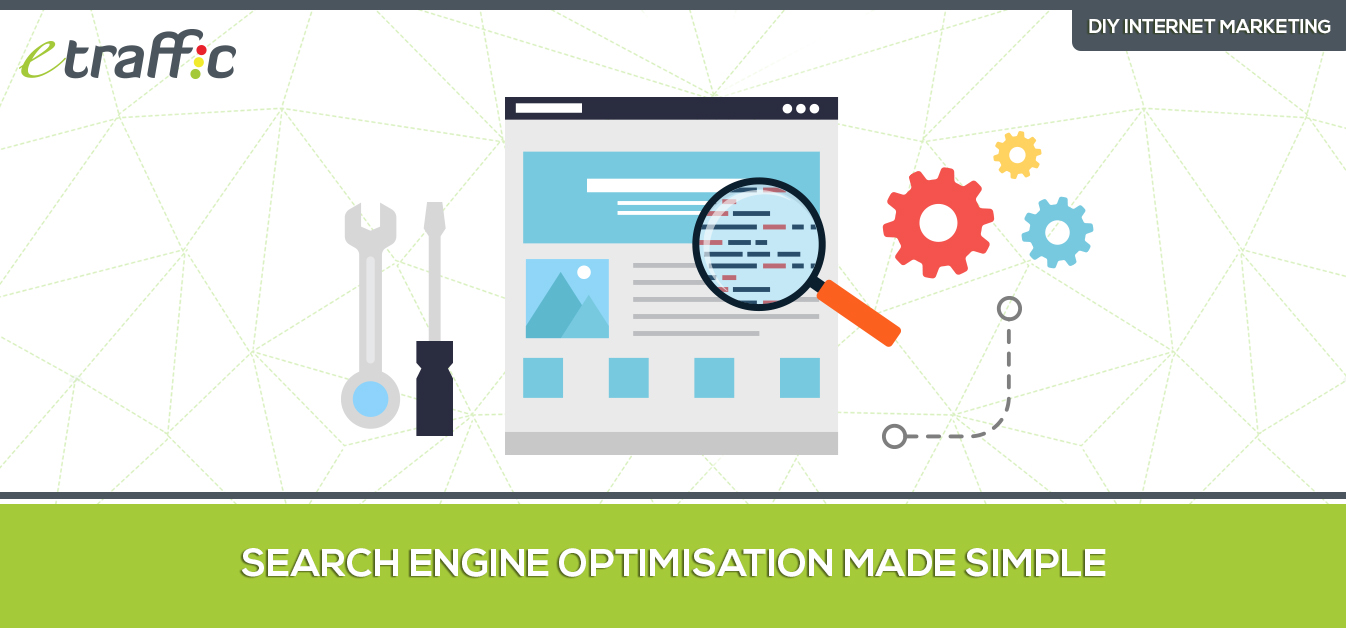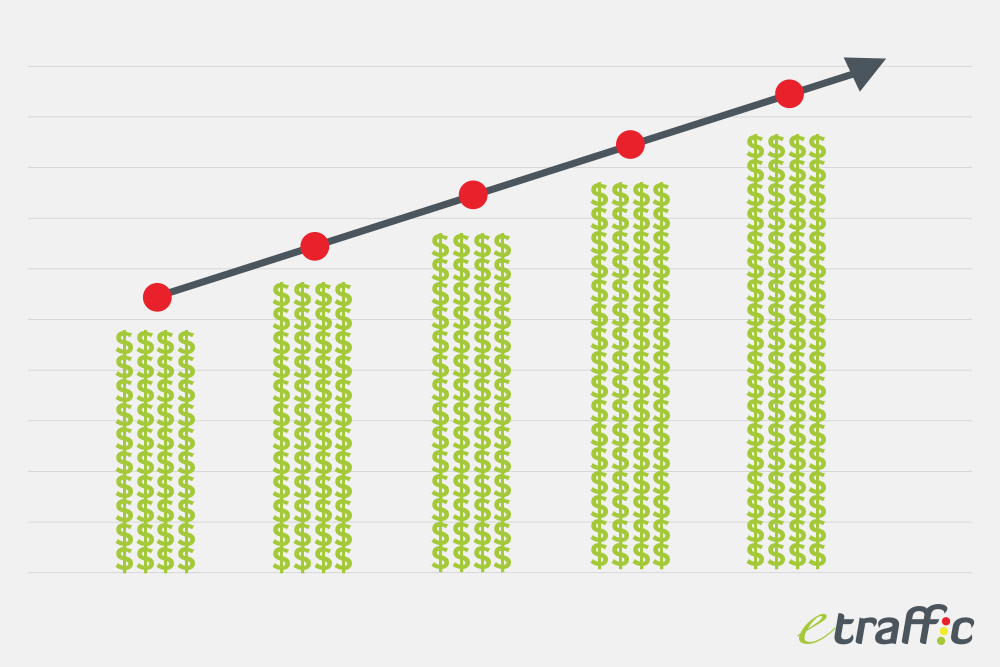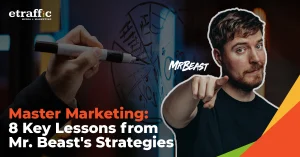![]() Posted by Cameron Francis
on
16 Feb , 2016
in
News Uncategorized
Posted by Cameron Francis
on
16 Feb , 2016
in
News Uncategorized

Search engine optimisation (SEO) is a MUST if you want to be found on search engines such as Google. This guide explains in detail everything you need to know about SEO.
By the time you’re through reading this guide, you should be able to:
- Start your SEO campaign;
- Attract traffic; and
- Measure your results.
Before we get started, it’s important to clarify one thing: SEO makes it easy for consumers to find you; don’t use it as a tool to drive free traffic.

Many times when people hear about SEO, all they think about is driving free traffic to their websites and blogs. While it’s true that SEO is an excellent way to drive traffic to a website or blog, this is not exactly why search engines were developed.
A search engine primarily works to map consumers to the right content. With regard to e-commerce, search engines help people find goods and services that they are looking to purchase. If a consumer wants to purchase a smartphone, the search engine will match him or her with the most suitable e-commerce websites that sell smartphones.
However, imagine that Jane knits custom sweaters using yarn. She then decides to take her business online, providing lots of information on how she knits the sweaters and even discussing the various qualities of yarn she uses. And, because Jane delivers high-quality content that her readers find very useful, in no time, her website finds its way to the top of search results! But, does she make as many sales as she would like to? NO. The reason is: Most people who read Janes posts knit themselves, and it is highly unlikely that they would be interested in buying Jane’s sweaters.
The point here is that as a business person, you need to know your objectives first and after that use SEO to pursue those objectives. If, like Jane, you knit custom sweaters, the reason you’re taking your business online is not to inform them that you use yarn to make your sweaters; you’re going online to sell or market/advertise the sweaters you knit. When using SEO, use it to do exactly that. Free traffic doesn’t help you, does it? Use SEO to tell people to buy your sweaters.
Defining SEO
Search Engine Optimisation (SEO) refers to the collective effort to influence how search engines index your website. In simple terms, SEO makes it easy for search engines to find your website.
There are more than a hundred million websites on the internet. Depending on your industry, you may be competing with thousands of other websites. SEO is a way of ensuring that when a potential customer searches for a product or service that you offer, Google will consider you as one of the best resources for that consumer. If they’re looking for custom knit sweaters and you indeed sell them, then you can use SEO to tell search engines that your website would be one of the best destinations for that consumer.
The most important thing, therefore, is to answer your target audience’s questions. In fact, the reason some businesses are more successful than others is they provide precisely what their customers are looking for. It calls for thorough research and analysis of your market’s needs and the ability to sway them your way with carefully selected words.
Benefits of SEO
If done correctly, SEO has the potential to turn around a business completely! The good news is that search engines don’t really care about the name of a business or how big you are in your local area. With SEO, what matters is what people think about you on the internet. This has allowed small businesses to thrive over the internet and even outperform more established companies.

The benefits of a successful SEO campaign are usually realised on multiple levels, with one benefit begetting another. Here are some of the benefits you can expect:
Brand awareness
This is perhaps the most obvious benefit of SEO. For example, if you can convince search engines to rank your website on the first page, count yourself very lucky. You’ll get a huge number of users to notice your brand, helping you take your business to the next level.
Visibility
Closely tied to brand awareness is visibility. Visibility is when consumers can find you. Billions of people visit the internet daily and research shows that more than 60% start their journey at the search engine. If you’re always among the first websites on the first or second page of search engine results, people will be able to find your business more easily.
Increased traffic
With increased brand awareness and enhanced visibility, the probability of getting increased traffic also rises. Studies show that about 70% of searchers don’t go past the second page. What this means is that these people usually click on one of the items on the first or second page. Therefore, if you can rank on one of these pages, expect a lot of traffic.
Increased sales
Typically, the more traffic you get; the more sales you’re likely to make. Of course, you need to put in place a strong conversion strategy but once that is done, no one can stop you from turning in sales one after another.
Build trust among your consumers
SEO is also excellent for building trust. People will start coming to your website because you’re ranking favourably on search engines. Since they already trust Google, they will automatically choose your site because Google has placed your site at the very top of the search results page.. You will soon become an authority in your industry and a go-to resource for both individuals and companies.
Open your business 24/7
Another reason you need SEO is that it never sleeps. As long as you’re doing the right things, you will continue reaping the benefits; 24 hours a day, seven days a week. It doesn’t matter what time of day it is; a searcher for a custom knit sweater will find your site, since Google already ranks you highly in that area.
Explore new markets
There couldn’t be a better way to explore new markets and find new customers than through SEO. Diversification is an important part of doing business; you need to diversify to mitigate risks. Now, you can use SEO to explore new markets. Moreover, it costs very little, and the ROI is very high. The same applies to finding new customers. Through careful selection of your keywords, you can optimise your web activities to reach out to your new target market.
Setting your SEO Objectives
SEO marketing starts with setting your objectives. For this, you need to be very specific. Moreover, all SEO goals must have a timeframe. A common acronym that most marketers use is “SMARTER” to mean Specific, Measurable, Attainable, Relevant, Time-based, Ethical, and Recorded goals.

Specific goals answer the five “W” questions – What, Why, Which, Where, and Who. For instance, if your goal is to get more conversions, ask yourself: What counts as a conversion for your business? Why you need to increase conversions? Which types of conversions do you want? Where the conversions would come from? Who exactly are you looking to convert?
Measurable goals can be evaluated, allowing you to see whether you’re succeeding or failing. Also, if you’re succeeding, you should be able to pinpoint which factors have contributed to your success and by how much. The same applies to if you’re failing.
Attainable means achievable. Can the goals be achieved? Or are you merely setting them for the sake of it? Set reasonable goals that can be met.
Relevant goals are those that can impact your business meaningfully. For instance, if you’re using SEO to build an online community, then driving traffic to your website would be a relevant goal.
Time-based goals are those that can be achieved within a specified timeframe. This is important in business because you won’t have all the time and resources to invest in activities that don’t add to the bottom line. For instance, you can set a goal of ranking on the second page within the first 12 months. Now, if at the end of the 12th month you fail to achieve this goal, then you can review your SEO strategy. I recommend reading Rand Fishkin post as he discusses the 6 Goals of SEO.
Ethics can no longer be underestimated in SEO. Search engines will seriously penalise you if you fail to live by their rules, checked out Claire Broadley as she discussed factors why you’re penalised by Google. Therefore, ensure that all your objectives and goals remain achievable within search engine regulations.
Recording your goals is crucial because, without these statistics, you will not be able to measure your achievements, making it difficult to determine where you’re headed.
How Search Engines Work
To fully utilise search engines, you need to understand how they work in the first place. We shall discuss three aspects of search engines: crawling, indexing, and how they rank websites.
Crawling and Indexing
Crawling is the term used to refer to the process by which search engines discover updated web content. This includes new websites or pages, changes to an existing site, and dead links.
To do this, search engines use programs commonly known as “bots” or “crawlers” or “spiders” ‑ with each search engine using a specific type. These programs consist of algorithms that define which sites the search engine should crawl and when.
As the bot moves through your website, it will also take note of links it finds on your pages and add them to a list that will be crawled later. Through this process, new content is easily discovered.
Indexing is the process that follows immediately after crawling. Essentially, it involves compiling a massive index of all words it sees and their location on each page.
Search engines typically keep a database of billions of web pages. After collecting so much information about your webpages, it can then interpret this information to measure its importance compared to other pages/websites in the database.
Servers based all around the world allow consumers to access this information in the blink of an eye. Since storing and sorting this information requires a lot of space, search engines keep a big number of servers. Google, for instance, has more than a million servers located all across the globe.
Ranking pages and websites
So, how do search engines decide who ranks first, who ranks on the second page, and so on? Well, it is a rather complex process involving the indexing of millions of pages and comparing them to match the consumers needs with the best possible answers.
When a consumer enters a search term, search engines will check their index for the closest match and assign scores to each page based on several ranking signals. The page with the highest overall score is listed at the top of search page results with others following based on their scores.
What Factors Affect a Site’s Ranking?
Search engines are constantly adding elements based on which sites are weighed. However, SEO Moz found that 5 of the most influential factors for Google ranking are;
- Domain level link authority features – these include quality of links to the domain and domain level page rank.
- Page level link features – these include page rank, quality of links, trust rank and anchor text distribution.
- Page level keyword and content features – this is where content quality, relevance, and topic modelling come in.
- Page level keyword-agnostic features – factors under this category include content length, uniqueness, and load speeds.
- Domain level brand features – these include offline uses of brand/domain name, mentions of the brand in news/media/press, entity associations, etc.
There are several other factors such as user, usage and traffic/query data; social metrics, and domain level keyword matches, to mention just a few. But the five elements listed above contribute more than 70% of what you need to rank highly on search engines.
SEO Top Tactics: Forcing Search Engines to Recognise your Website
Okay, there is no forcing. As long as you do what is expected of you, search engines will no doubt find your site and rank it accordingly. But, YES, there are several things you can do to speed up the process.
Keyword search
This is the very first step in search engine optimisation. You can only rank for a certain keyword or a set of keywords. Therefore, you need to be very careful with keyword selection.
Keyword search is the process of selecting appropriate word phrases that can help you rank for certain keywords. Check out these process as these give you more idea how to keyword research to be done:
– How to Find the Right Keyword for Your Website
– Beginners Guide How To Do Keyword Research
– A Definitive Guide in Keyword Research
– Using Google Trends With Your Local Keyword Research
– Using Google Analytics To Prove SEO Value
To win the keyword search battle, you need to keep the following four factors in mind;
- Search volume – are people searching for that keyword? And, if so, how many? You need to choose keywords that are being searched by a lot of people because it’s the only way to reach a bigger audience.
- Relevance – while keeping in mind the search volume of the keyword, do not forget about relevance. The keyword(s) you select must be relevant to your market niche.
- Competition – this is where many marketers fail. When choosing keywords, you need to consider which other businesses are using the keywords, and you’re likelihood to rank for them. There are several keyword tools out there such as SEM Rush to help you determine the effectiveness of your keywords versus the competition.
Website optimisation (on-page and off-page)
Once you have determined the most suitable keywords for your situation, the next step is to optimise your website. Website optimisation refers to the sum of activities carried out to make the website easier to crawl and index. Ideally, you will be optimising individual pages because, as we saw earlier, search engines crawl pages, one by one.
There are two types of optimisation: on-page and off-page.
On-page optimisation involves working from within your website to influence the crawlability of your site. This differs from off-page optimisation where you leverage the success of other websites to affect your ranking. On-page optimisation includes
- Optimising your titles by using title tags
- Providing a Meta description for every page
- Ensuring your domain name contains your keywords
- Providing a sitemap to help search engines crawl your website faster
- Using ALT tags to optimise your images
Off-site optimisation involves having a high number of quality links pointing to your website. Search engines will see you more as an authority when users reach your website from established websites. This brings us to link building.
Link building

As the name suggests, link building involves connecting your website with other websites through ethical links. Link building, however, has been the centre of attention in the recent past where Google in particular adjusted their algorithms to punish unethical link building attempts while rewarding genuine efforts. To be successful, use a variation of the following three core strategies:
1. Identify and understand your linking and sharing audience
The first step is to identify who is likely to share and link to your content. There are several tools that you can use to access influencers in your industry, but probably the most powerful is BuzzSumo. FollowerWonk, and Little Bird, are also popular choices. Thereafter, find out what these influencers are most interested in. Then provide content that they can share and link to.
2. Create great content and promote it vigorously
Content can be said to be great for two main reasons: if it is written well and if it solves your customer’s problem. If you can create content that scores highly in both, then rest assured that people will want to share it. Alternatively, find something that already works and create content that is a level or two above it. Lastly, you can also create content that praises the efforts of other people. If this person finds your content, they will most definitely like it and may even share and link to it.
3. Map your assets to specific keywords
You can also find out what people are searching and provide solutions to these problems. Just ensure to craft your content in a way that the target audience will enjoy, and you may get a link or more.
Content
“Content is King” is a popular marketing battle-cry, and rightly so. Content works in two main ways: first for the customer then for the search engine.
When writing for your customers, make it useful. Although you need to keep your keywords in mind, do NOT dilute the value of content just to sneak in your keywords. For instance, if the content is great, more people will want to read it. This may prompt them to visit your website or blog more often to read similar stories – resulting in more traffic! But it doesn’t end there. If the reader is so happy about your content, they may consider sharing it with others through channels like social media. Others may even link to the content! So, in addition to increased traffic, you’re also getting the links you need.
Writing for search engines requires knowledge of how the engines crawl pages and what they look for. You need to know where to place your main keywords and where to place long-tail keywords.
SEO Best Practices
When all is said and done, you need to be armed with a set of best practices to push your website forward. There is so much when it comes to SEO and in all honesty, it may not be possible to do perform very well in each area. So, to help you out, here is a collection of seven SEO best practices that you can easily implement anytime:
1. Focus on the keyword
The importance of keywords cannot be overstressed. Start by knowing your industry well, including commonly used keywords. While it’s nice to be unique, it is currently almost impossible to discover new keywords that aren’t already being used in your industry. So, find out what keywords are being used in the industry, which ones are performing well, and then choose the most relevant keywords to your business. Then consider the level of competition. Choose only keywords that don’t have a high level of competition. With that, you can now get down to creating content around these keywords.
2. Prioritise the content
While keywords are paramount, content is just as important.
When creating content, focus on quality and optimisation. Quality content is hitting two birds with one stone in that will win you both the hearts of the readers and the trust of search engines. If you can do it correctly, success can never be too far away.
Optimisation means writing for search engines. It involves using title and ALT tags and metadata to show search engines your most important keywords.
3. Leverage long-tail keywords
You realise that so many businesses compete for the same keywords. If you tried to rank for “sweaters,” for example, you would be so disappointed because you may not even get on the third page, let alone the first and the second.
An increasingly popular solution to this problem is to use long-tail keywords. The term “long-tail” means using a combination of the main keyword and other secondary keywords that are still relevant to your business. For instance, instead of just “sweaters,” you can optimise your site for “custom knit sweaters.” Through careful selection of long-tails, many small businesses have been able to climb to the top of search results pages – even beating the more established companies.
4. Build quality links
There are links and then there are quality links. Search engines definitely prefer the latter. Nowadays, bulk linking will not get you very far. So, although you need links, remember that quality is even more important.
To build quality links, start by creating great content that people would like to share and link to. Do not hard-sell anything; if it’s good, they will see it. If it’s bad, they can also see it.
5. Go Social
With more than a billion people using social networks, there couldn’t be a better place to expand your reach. What you need to do is to get people to share your content on social media and drive conversations from there.
Start by providing social sharing links or buttons on your site and make them easy to locate. Then ask readers to like, retweet, and share your content. It gets even better as you grow a bigger, active social community because with every increase in traffic to your site from any social network, your reputation on search engines also increases!
6. Community and ROI first, ranking second
Yes, ranking still matters a lot. But, don’t let it be your number one priority. Gone are the days when ranking was the be-all-end-all. Today, marketers look for two things; ROI and building online communities.
Think about it this way; if you have a loyal online community that would rather buy from you than anywhere else, you’re a big winner! Even if you’re not at the top of search engine result pages, you’re still getting a return on your investment, and that’s what matters most to businesses. Moreover, as long as you’re doing the right things, good ranking will always come.
7. Optimise for local searches
Last but not least, optimise for local searches. Most small businesses continue to ignore local searches and have missed out on a big opportunity in the process. Ask yourself who is your first customer? Is it not the local people who come by your store daily? Are they not your neighbours who would rather buy from you than elsewhere? You simply can’t afford to ignore these people.
Therefore, if you’re selling customer knit sweaters in Melbourne, go ahead and optimise your site for “custom knit sweaters Melbourne.” You will be surprised at how much local traffic you will attract.
Measuring and Tracking SEO

The last step in SEO is measuring and tracking your performance. Failing to measure your performance is like spending your earnings without noting where the money went. Unless you have unlimited money to spend, you will soon be broke with several bills to pay. Unfortunately, in SEO, there is no such thing as unlimited resources.
First, you need to identify what you need to measure. Different experts have come up with different metrics that you may consider. Some provide up to 20 metrics. The most important thing is to measure all the Key Performance Indices (KPIs) of your efforts.
Other than cumulative (total) traffic, here are five SEO KPIs that every marketer needs to measure:
1. Non-branded, Organic traffic
A good way to measure the performance of your SEO campaign is to measure your traffic post: the launch of the SEO campaign versus the traffic prior to the launch of the campaign. However, you shouldn’t just look at the overall traffic; you need to concentrate on non-paid (organic) traffic. Moreover, you need to filter out searches for the name of your brand and key products. That leaves you with non-branded, inorganic traffic that shows you how well your SEO campaign is doing.
2. Number of new, high-quality links
Links form the lifeblood of your SEO campaigns. As such, you need to determine how many new authority links you’re getting as the campaign progresses. But remember that although still important, links coming from the comments sections of your blog, press releases, social media networks, forum boards, and directories do NOT count as HIGH-QUALITY links.
3. Number of indexed pages
How many of your web pages are currently being indexed by Google? And, is this number increasing or decreasing? Remember that the more pages you get indexed by search engines, the better your chances of ranking favourably for your keywords. As you build your SEO campaign by adding new blog posts and new webpages, ensure that the number of indexed pages is also increasing.
4. Organic conversions
What share of the organic traffic are you converting? How many people are taking action on your website? Which keywords are driving the most conversions? Which keywords have the highest bounce rates (only visiting a single web page)? When you know which keywords are bringing the best return on investment, you should invest more on those keywords and eliminate the poor performers.
5. Non-branded, organic search dollar value
At the end of the day, what matters most is how much money you’re making from your SEO efforts. Your non-branded, organic search dollar value is a comparison of the ROI for your SEO versus paid search. You can then adjust your marketing budget to reflect your priorities.
In addition to these five, you may also consider monitoring the following two metrics:
a. Unique keywords
Also known as your “discovery index,” this metric will tell you how many unique keywords are being used to find your business over a specified period. You can easily get these metrics from Google Analytics. If there are any unique keywords being used to find your business, pick them up and blend them in your SEO campaign going forward.
b. Social signals
Since search engines also use social signals when indexing your pages, it’s important to keep track of how you’re performing on social media. Social signals are metrics such as Facebook comments, likes, and shares; Twitter’s tweets and retweets; LinkedIn shares; and Google +1’s and shares to all your web content including; blog posts, PRs, and web pages.
In summary, Search Engine Optimisation (SEO) is an excellent internet marketing strategy that promises immense benefits on multiple levels. If you haven’t set up your SEO campaign, don’t waste any more time; do so immediately.






